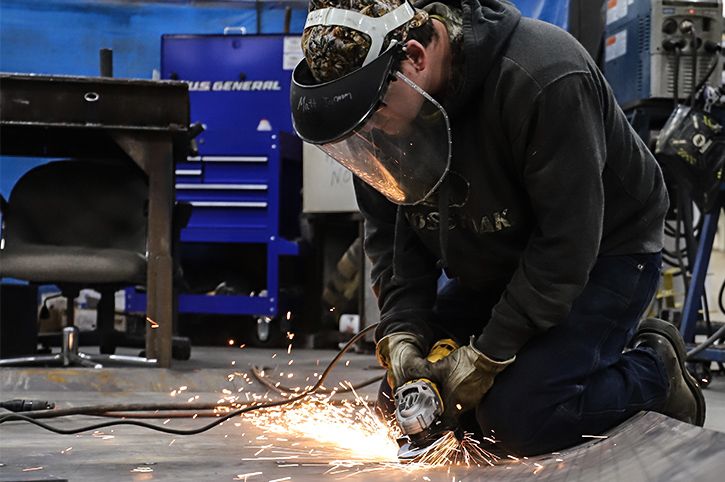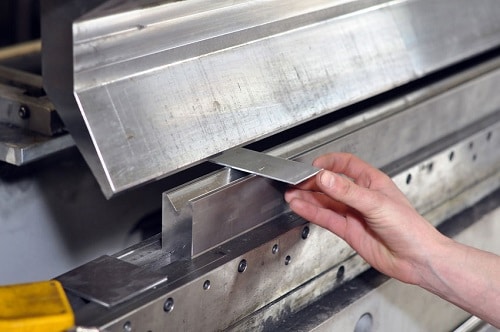What is custom metal fabrication? What distinguishes custom fabrication from standard fabrication? This extensive post will answer these and other questions.
Table of Contents
Custom metal fabrication in Dubai has evolved by magnitudes in fields such as aerospace, construction, energy, and the automobile sector. One of the reasons for this development is that it allows for the production of application-specific products.
While product specifications may vary, custom metal fabrication techniques help metal fabricators create and build high-quality machinery and equipment.
What is custom metal fabrication?
Custom metal fabrication refers to using a variety of fabrication techniques to create a product that is tailored to the customer’s specifications. Some of the best metal fabricators in the UAE have developed this flexible fabrication approach to satisfy their customers’ needs.
Unlike standard metal fabrication procedures, custom metal fabrication allows for product customization. The custom fabrication process generates robust, high-quality solutions that provide long-term value using cost-effective methods.
Here are examples of custom fabrication procedures that result in high-quality fabrications that retain their value over time.
1. Defining the design process
Making sure the custom fabrication specifications are optimized is critical to producing the desired and required output while also guaranteeing that the project is done in the shortest amount of time.
Using a standard plan, metal fabricators can build a detailed design that will clarify the desired output and define the processes they will use to get the best possible outcomes.
Specifically, this will require modifying and testing the concept per industry-specific standards and selecting all of the pieces that will form the basis of the final product.
You can get support from the leading custom metal fabricators in Dubai in areas such as:
- Hole depth and location
- The flatness of the surface
- Radiuses
- Tolerance
- Material thickness
- Dimensions
When it comes to creating value, the metal fabrication design is crucial. With the correct engineering knowledge, the design will ensure that the project achieves every value-add requirement.
2. Metal forming & cutting
In order to meet the required design criteria, metal fabricators evaluate the best technique based on the project specifications. Metals requiring tight tolerance can benefit significantly from Computer Numeric Control (CNC) laser cutting. Thick metal plates may be easily carved into circular holes or other complex designs when using plasma tables.
To avoid spray reactions, lasers are not suited for metal composites or materials that include impurities. Impurity- or metal composite-containing materials may be more suited for general welding services.
Sawing is better for large structural projects that require massive beams for the completion stage. Plate shears are the most cost-effective solution for cutting simple structures, such as carbon steel ducting.
It may be necessary to bend, plate and angle roll, or punch the metal when forming metal. Depending on the design, press brakes or folding machines are employed to make these bends. Therefore, it is vital to choose the most appropriate machinery to achieve the desired output.
3. Custom welding & assembling proficiency
Using custom welding and assembly procedures, metal fabrications can be made to satisfy industrial specifications. With certified welders and a documented quality control program, custom fabricators are more likely to meet industry standards that offer value.
All assemblies and subassemblies must be tested together to verify that the final fabrication project works as planned. As part of a rigorous quality control program, every assembly process step should be photographed and documented.
Carts and ladders, for example, should be transported in the best feasible shape. When shipping large fabrications, it’s best to include large subassemblies that can be put together quickly at the customer’s location. You can save time and money by using a custom assembly procedure like this one.
4. Finishing to add value
The final phase in preparing metal items for use is finishing, and it’s an essential part of every project involving metal fabrication. Corrosion resistance and electrical, chemical, and tarnish resistance are all improved by this process.
Finishing adds a layer of protection for metal surfaces and makes them look their finest. The intended use of a product dictates the final finish for the majority of projects.
Metal finishing is a multi-step procedure that can be carried out in a variety of techniques.
Consider the following variables when picking a finishing solution for your next metal fabrication project:
- Which method is best suited to your product’s intended use?
- It’s important to consider whether the technique you’re considering can meet your project’s production needs.
- Is your project’s finishing process considered to be cost-efficient?
- Is the method of finishing suitable for the materials used in your project?
When looking for the best metal fabrication companies in the UAE, it’s important to do your research because not all organizations can produce the same quality of work. When you work with Eminence Metal Fabrication, you can rest assured that you’re getting the best possible product and the best possible value for your money.
Contact us today if you have additional queries that aren’t covered here. If you have a metal fabrication project in mind, we’d love to hear from you!
Frequently Asked Questions
What is laser cutting?
Laser cutting is a quick and accurate method of profile cutting. It employs a strong laser beam and is ideal for various material kinds and thicknesses that older technologies cannot match.
How do different cutting methods apply to different types of metal?
Plasma and oxyacetylene have traditionally been used to cut plate and sheet metal. The arrival of lasers revolutionized the business by allowing for clean, precise cutting. Using optic-fiber laser-cutting devices, the capacity to cut metal has greatly expanded the field with high quality, versatility, and speed.
What do I need to provide to get a quote?
Please provide us with any information you have, as well as the number of units you need, and we’ll get back to you with a price. The more details you offer, the more precise the cost will be.




